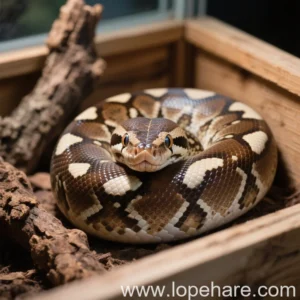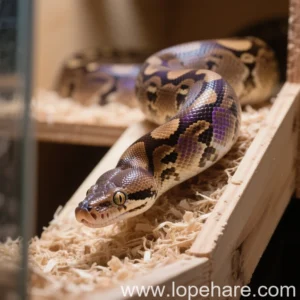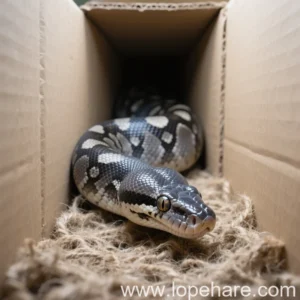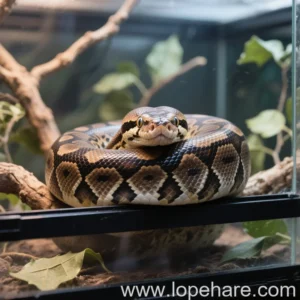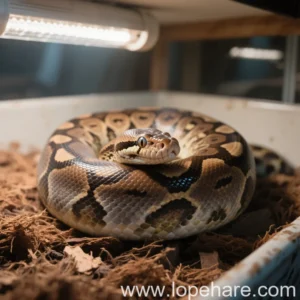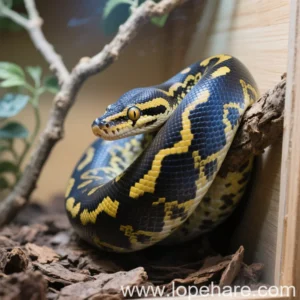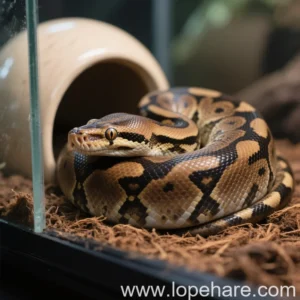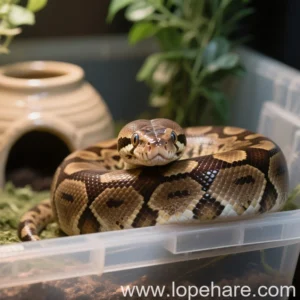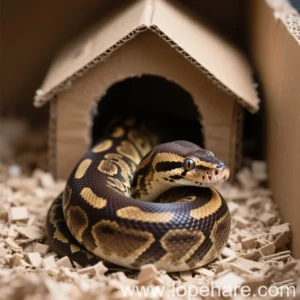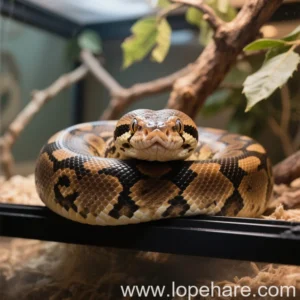7 Common Ball Python Health Problems and How to Treat Them
As editors at lopehare.com, we’ve dedicated ourselves to providing comprehensive and professional care knowledge for exotic and small pets, including reptiles. Ball pythons (Python regius) are incredibly popular pets due to their docile nature and manageable size, but like any living creature, they are susceptible to health issues. The vast majority of common Ball Python health problems stem from improper husbandry – incorrect temperature, humidity, or sanitation. Understanding these potential issues and knowing how to prevent or address them is crucial for any keeper. While professional veterinary care is always necessary for diagnosis and treatment, recognizing the signs early can make a significant difference.
Understanding the Basics of Ball Python Health
A healthy ball python is alert (when active), has clear eyes and nostrils, sheds its skin cleanly, passes solid waste regularly, and maintains good body condition. Deviations from this can indicate a problem. The key to prevention lies in maintaining their environment within the correct parameters: a temperature gradient, appropriate humidity (50-60% ambient, higher during shed), proper ventilation, and a clean enclosure. When things go wrong, however, several common ailments can arise.
1. Respiratory Infections (RIs)
Respiratory infections are one of the most frequent and serious issues faced by Ball Pythons, often caused by consistently low temperatures or high humidity with poor ventilation. Bacteria or fungi can proliferate in these conditions.

Symptoms:
- Wheezing, clicking, or gurgling sounds when breathing.
- Excessive mucus or bubbles around the nostrils or mouth.
- Open-mouth breathing.
- Lethargy and loss of appetite.
- Holding head at an upward angle (“star gazing”) in severe cases.
Treatment:
If you suspect an RI, immediately correct your husbandry (ensure proper temps and humidity with good air flow). However, RIs require veterinary attention. A reptile vet will diagnose the issue, often taking swabs for culture, and prescribe antibiotics or antifungals. Home remedies are not effective and delay proper treatment, which can be fatal.
Learning how to identify respiratory infections in ball pythons early is paramount for a positive outcome.
2. Scale Rot (Infectious Dermatitis)
Scale rot is a bacterial or fungal infection of the scales, typically resulting from prolonged exposure to overly wet or unsanitary conditions (e.g., wet substrate, feces left in the enclosure).
Symptoms:
- Small blisters or raised scales.
- Discolored scales (pink, red, brown, or black).
- Pitting or ulceration of scales in advanced stages.
- Crusty or infected-looking areas.
Treatment:
Mild cases might improve with immediate and drastic changes to husbandry – drying out the enclosure completely, using paper towel substrate, and increasing temps slightly (within safe limits). Daily shallow baths in a dilute antiseptic solution (like chlorhexidine, as recommended by a vet) can help. However, moderate to severe scale rot needs veterinary intervention, often involving prescription antibiotics or antifungals and debridement of affected tissue.
3. Mites
Reptile mites are tiny external parasites that feed on a snake’s blood. They are highly contagious and can quickly infest an enclosure. Mites cause stress, discomfort, and can transmit diseases.
Symptoms:
- Tiny black, red, or gray dots crawling on the snake, especially around the eyes, heat pits, and under the scales.
- Mites visible in the water bowl (they drown in water).
- Snake soaking frequently to try and drown mites.
- Lethargy, loss of appetite, and irritability.
- Small red spots on the snake’s skin where mites have bitten.
Treatment:
Mite treatment requires treating both the snake and the entire enclosure. Soak the snake in shallow, lukewarm water to drown active mites. Clean the enclosure thoroughly, discarding all substrate and disinfecting everything (decor, hides, walls) with a reptile-safe disinfectant. Several commercial mite treatments for reptiles are available, but always follow product instructions precisely or consult your vet, as some can be toxic if misused. Preventing mite infestations in ball python enclosures through quarantine of new animals and thorough cleaning is key.
4. Regurgitation
Regurgitation is when a snake expels its food after swallowing it (different from vomiting, which comes from the stomach). It’s a symptom, not a disease itself, indicating something is wrong with the snake or its environment.
Common Causes:
- Handling the snake too soon after feeding.
- Temperature in the enclosure is too low, preventing proper digestion.
- Prey item is too large.
- Stress (e.g., from changes in environment, bullying by other pets if cohabitated).
- Underlying illness (RI, internal parasites, etc.).
Treatment:
First, identify and correct the cause (e.g., raise temperature, stop handling). Do not attempt to feed the snake again for at least 10-14 days to allow its digestive tract to recover. Offer a much smaller meal for the first post-regurgitation feeding. If regurgitation persists or occurs without an obvious husbandry cause, a vet visit is necessary to rule out underlying health problems.
Warning: Repeated regurgitation is very serious and can quickly lead to severe dehydration and malnutrition. It requires prompt veterinary investigation.
5. Shedding Problems (Dysecdysis)
A healthy ball python should shed its skin in one complete piece, including the eye caps. Dysecdysis, or incomplete/difficult shedding, is usually caused by low humidity in the enclosure.
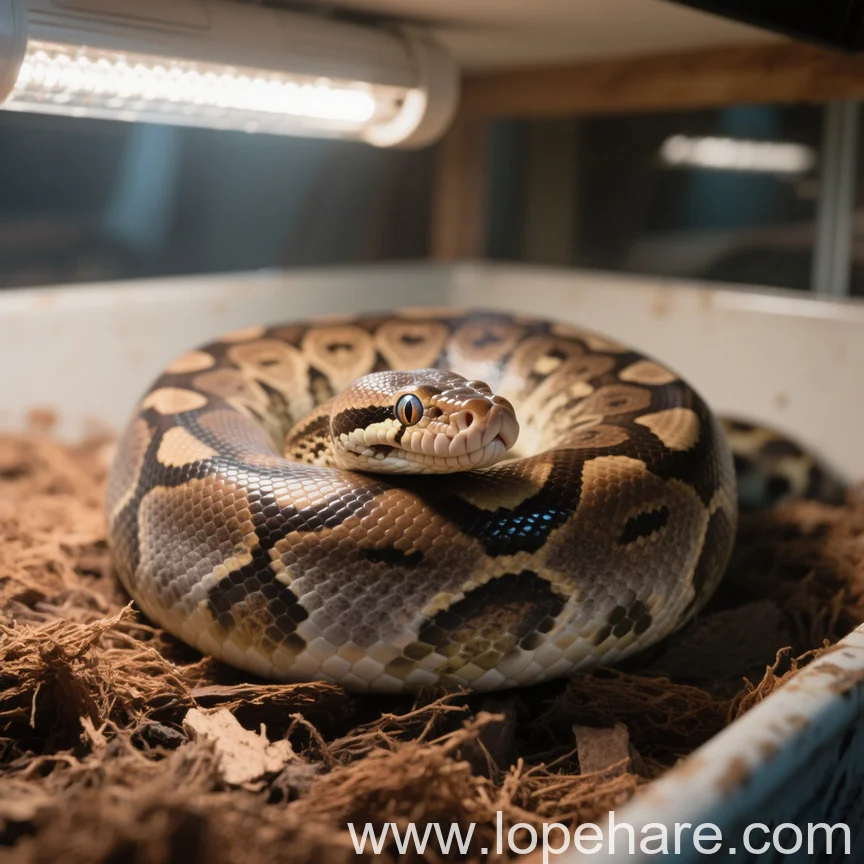
Symptoms:
- Shed skin comes off in pieces.
- Retained eye caps (spectacles look cloudy or wrinkled after shed).
- Pieces of old skin stuck on the body.
- Dull appearance even after shedding attempt.
Treatment:
Increase humidity in the enclosure immediately. For retained shed, particularly eye caps, soak the snake in a shallow container of lukewarm water for 30-60 minutes. A “shed box” (a humid hide with damp sphagnum moss) can also help. After soaking, you can gently try to peel *loose* pieces of skin, but never force it, especially eye caps. Retained eye caps must be removed carefully by an experienced keeper or a vet, as improper removal can damage the eye. Persistent shedding problems require reviewing and correcting your entire husbandry setup. Dealing with stuck shed in ball pythons is a common issue that is often preventable.
6. Stomatitis (Mouth Rot)
Stomatitis is an infection of the mouth and gums, often starting as small petechiae (pinpoint hemorrhages) and progressing to pus, swelling, and tissue death. It can be caused by injury to the mouth, poor sanitation, or underlying stress/illness compromising the immune system.
Symptoms:
- Redness or swelling around the mouth.
- Pus or cheesy discharge in the mouth.
- Difficulty closing the mouth.
- Loss of appetite.
- Bloody saliva.
Treatment:
Mouth rot requires prompt veterinary care. A vet will clean the mouth, prescribe antibiotics (oral or injectable), and potentially pain relief. Severe cases may require surgery. Correcting husbandry issues (cleaning, temperature, humidity) is crucial for recovery and prevention.
7. Dehydration
Dehydration occurs when a snake doesn’t get enough water. While seemingly simple, Ball Pythons can become dehydrated if humidity is too low, water bowls aren’t fresh or accessible, or they are too weak/sick to drink.
Symptoms:
- Wrinkled or loose skin that doesn’t snap back when gently pinched.
- Sunken eyes.
- Sticky mucus in the mouth.
- Lethargy.
- Difficulty shedding.
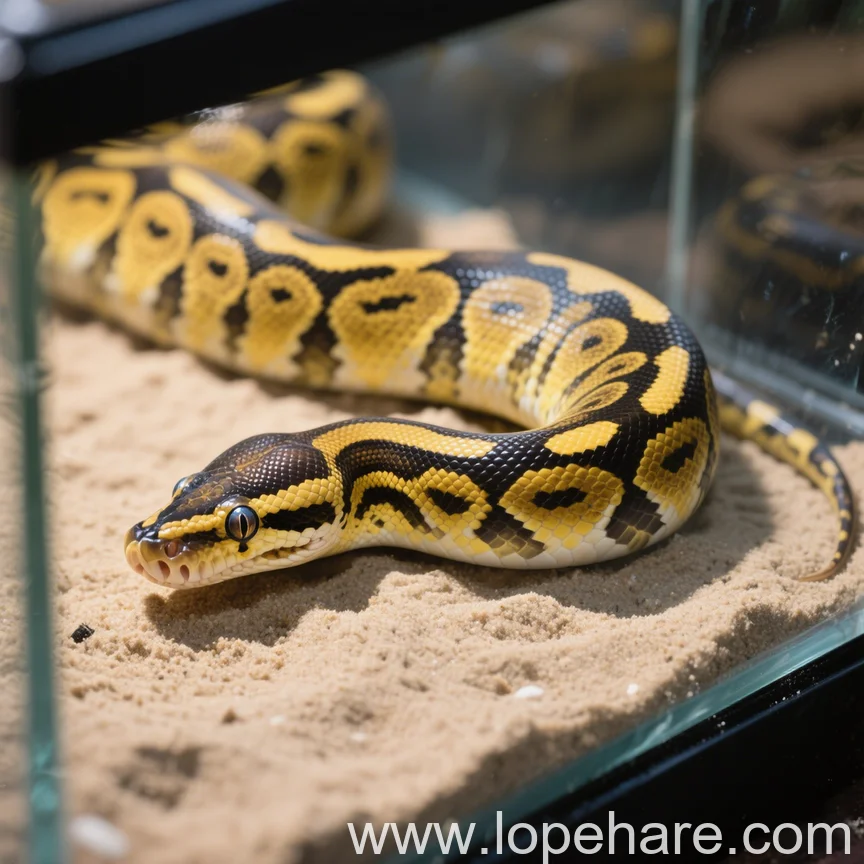
Treatment:
Immediately ensure proper humidity levels and provide a clean, fresh water source large enough for the snake to soak in if desired. For mild dehydration, increased humidity and access to water might be sufficient. Moderate to severe dehydration requires veterinary intervention, often involving subcutaneous or intracoelomic fluid administration to rehydrate the snake quickly and effectively. Ensuring adequate hydration is a fundamental aspect of proper snake pet care.
Proactive Care is Best: Preventing these issues through diligent, correct husbandry is far easier and less stressful for both you and your Ball Python than treating them. Regularly monitor your snake and its environment.
Conclusion
Owning a Ball Python is a rewarding experience, and providing excellent care is our top priority at lopehare.com. While they are generally hardy if their needs are met, being aware of common health problems like respiratory infections, scale rot, mites, regurgitation, shedding issues, stomatitis, and dehydration is vital. Recognizing the symptoms early and seeking prompt veterinary care from a qualified reptile vet are key to successful treatment. Remember, prevention through precise husbandry is the best medicine. By maintaining the correct temperature, humidity, and cleanliness, you significantly reduce the risk of these ailments and help your Ball Python live a long, healthy life.
References:
- Ball Python – Wikipedia
- Personal experience and resources provided by lopehare.com.
